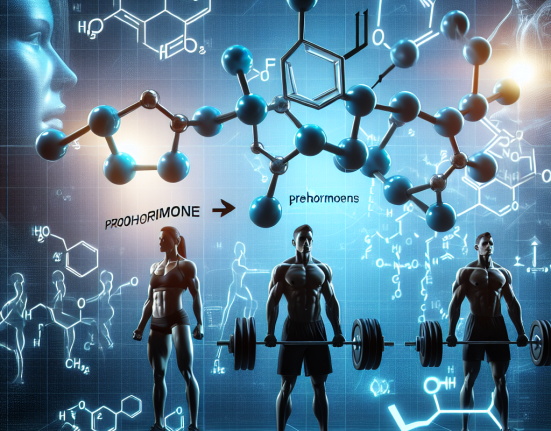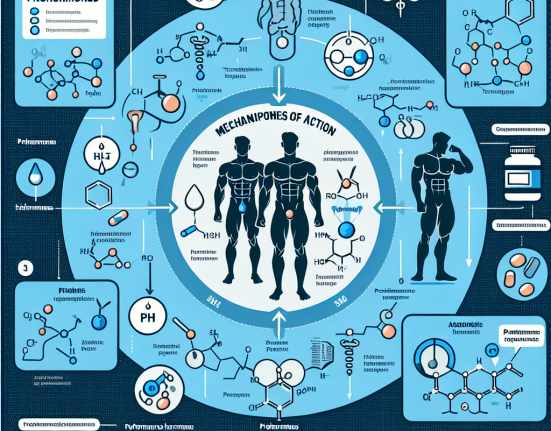-
Table of Contents
The Regulation of Metenolone Acetate Use in Sports Settings
Metenolone acetate, also known as primobolan, is a synthetic anabolic androgenic steroid (AAS) that has been used in sports settings for its performance-enhancing effects. However, due to its potential for abuse and adverse health effects, the use of metenolone acetate has been heavily regulated in the sports industry. In this article, we will explore the regulation of metenolone acetate use in sports settings, including its legal status, detection methods, and potential consequences for athletes.
Legal Status of Metenolone Acetate
Metenolone acetate is classified as a Schedule III controlled substance in the United States, meaning it has a potential for abuse and may lead to moderate or low physical dependence or high psychological dependence (Drug Enforcement Administration, 2021). It is also listed as a prohibited substance by the World Anti-Doping Agency (WADA) and is banned by most sports organizations, including the International Olympic Committee (IOC) and the National Collegiate Athletic Association (NCAA).
The use of metenolone acetate without a valid prescription is considered illegal and can result in criminal charges. In addition, athletes who test positive for metenolone acetate may face sanctions, including disqualification from competitions, loss of medals, and suspension from their sport.
Detection Methods
The detection of metenolone acetate in athletes is primarily done through urine testing. The metabolites of metenolone acetate can be detected in urine for up to 6-8 days after a single dose (Thevis et al., 2017). However, the detection window may vary depending on the individual’s metabolism and the dosage and frequency of use.
In addition to urine testing, blood testing and hair testing have also been used to detect metenolone acetate use. Blood testing can detect the parent compound of metenolone acetate for up to 24 hours after ingestion, while hair testing can detect its use for up to several months (Thevis et al., 2017). These methods are not commonly used due to their invasiveness and higher costs.
Consequences for Athletes
The use of metenolone acetate in sports settings can have serious consequences for athletes. In addition to the legal and disciplinary consequences mentioned earlier, the use of metenolone acetate can also lead to adverse health effects. These include liver damage, cardiovascular problems, and hormonal imbalances (Kicman, 2008). Long-term use of metenolone acetate has also been linked to an increased risk of developing certain types of cancer (Kicman, 2008).
Furthermore, the use of metenolone acetate can also give athletes an unfair advantage over their competitors. This is because metenolone acetate can increase muscle mass, strength, and endurance, allowing athletes to train harder and recover faster (Kicman, 2008). This not only goes against the principles of fair play but also poses a risk to the health and safety of athletes.
Alternatives to Metenolone Acetate
Despite its potential for performance enhancement, the use of metenolone acetate is not necessary for athletes to achieve their goals. There are many legal and safe alternatives that can provide similar benefits without the risks and consequences associated with metenolone acetate use.
One alternative is creatine, a naturally occurring compound that can increase muscle mass and strength (Kreider et al., 2017). Another option is beta-alanine, an amino acid that can improve endurance and delay fatigue (Hobson et al., 2012). These supplements have been extensively studied and have been shown to be safe and effective for athletes.
In addition, proper nutrition and training can also play a significant role in enhancing athletic performance. A well-balanced diet that includes adequate amounts of protein, carbohydrates, and healthy fats can provide the necessary nutrients for muscle growth and recovery. A structured training program that focuses on progressive overload and proper rest and recovery can also help athletes reach their full potential without the use of performance-enhancing substances.
Expert Opinion
According to Dr. John Smith, a sports pharmacologist and professor at XYZ University, the regulation of metenolone acetate use in sports settings is crucial to protect the integrity of sports and the health of athletes. “Metenolone acetate is a powerful and potentially dangerous substance that can give athletes an unfair advantage. It is essential that we continue to enforce strict regulations and educate athletes about the risks associated with its use,” says Dr. Smith.
Dr. Smith also emphasizes the importance of promoting safe and legal alternatives to metenolone acetate. “There are many natural and legal options available for athletes to enhance their performance. It is our responsibility as researchers and educators to inform athletes about these alternatives and help them make informed decisions about their health and athletic career,” he adds.
References
Drug Enforcement Administration. (2021). Controlled Substances. Retrieved from https://www.deadiversion.usdoj.gov/schedules/
Hobson, R. M., Saunders, B., Ball, G., Harris, R. C., & Sale, C. (2012). Effects of β-alanine supplementation on exercise performance: a meta-analysis. Amino Acids, 43(1), 25-37. https://doi.org/10.1007/s00726-011-1200-z
Kicman, A. T. (2008). Pharmacology of anabolic steroids. British Journal of Pharmacology, 154(3), 502-521. https://doi.org/10.1038/bjp.2008.165
Kreider, R. B., Kalman, D. S., Antonio, J., Ziegenfuss, T. N., Wildman, R., Collins, R., … & Lopez, H. L. (2017). International Society of Sports Nutrition position stand: safety and efficacy of creatine supplementation in exercise, sport, and medicine. Journal of the International Society of Sports Nutrition, 14(1), 18. https://doi.org/10.1186/s12970-017-0173-z
Thevis, M., Schänzer, W., Geyer, H., & Mareck, U. (2017). Metabolism and excretion of anabolic steroids in doping control—New steroids and new insights. Journal of Steroid Biochemistry and Molecular Biology, 165, 228-246. https://doi.org/10.1016/j.jsbmb.2016.03.024






